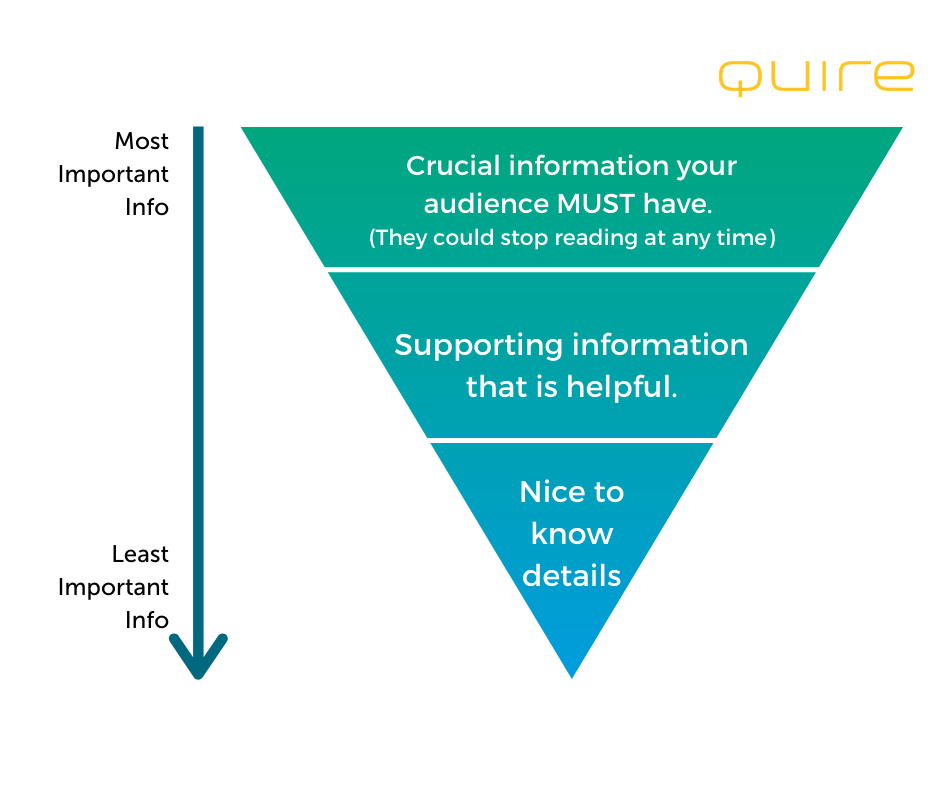As recovering technical report writers, we know how easy it is to go on autopilot. It’s common to write and format reports a certain way because that’s the way it’s always been done.
But if you spend too much time formatting your reports, wrangling unwieldy data, and setting your writers up with the right information and notes, it’s time for a change! Improve your business offering and your bottom line with these technical report optimization tips from Quire.
Define templates for each common report type
The first step towards better organization and efficiency is auditing your current report writing process. After writing a successful, well-formatted report, you may be tempted to reuse it for the next job—but this poses several potential issues:
- It’s not easy to find and replace site-specific information, increasing the likelihood of errors.
- “Renovating” previously written site-specific content often takes more time than writing fresh text for your current project.
- Reusing previous reports reduces critical thinking about the necessity and purpose of each section, causing some writers to leave content out or preserve extraneous sections.
- Some writers may be reluctant to add content that could disrupt formatting, so decisions are guided by restriction rather than by possibility.
Rather than reusing favorite documents, technical report optimization depends on having templates that are simple to fill in, while allowing for flexibility to present information in the most streamlined format for your client. As you build templates for each common report type (ESA, PCA, etc.), consider the following tips.
Tip #1: Put critical findings up front
Many report writers organize their reports in a narrative way, walking the reader through the methodology and findings before revealing major conclusions. But remember, this report is a business tool for your clients to make a business decision—not a showcase of your work.
Decision makers need to see the most essential information first, so they can quickly evaluate and determine next steps before moving on to the fine details.

Rather than placing calculations, employee resumes, and other reference information at the top of your report, consider leading with a summary table of key takeaways and keeping the “nice to know” details towards the end or in an appendix. Your clients will thank you!
Tip #2: Avoid repetition
Some report writers like to display key information throughout a report “to ensure it’s seen”—but keeping this information upfront in a summary table should resolve the incorrectly perceived need for duplicate inputs.
As you build out report templates, look for opportunities to reduce rather than lengthen your reports. Resist the urge to overexplain. Not only will you minimize potential mistakes, but you’ll also simplify things for readers and writers alike.
Tip #3: Optimize instructions to writers
It can be frustrating when writers and reviewers repeat the same mistakes or frequently need clarification on a specific section—but this signals a larger problem. Your team is likely not receiving the guidance they need from the get-go. They need clear instructions up front.
Instruction sections are crucial to the efficiency of your report writing process. Here are some of our tips for success:
- Remove site-specific information from report samples and substitute with color-coded placeholder text in your master template.
- Place instructions as close as possible to the section they relate to.
- Keep instructions brief and clear.
- Use bullet points rather than full sentences so writers can quickly absorb text.
- Use numbered steps when tasks must be completed in order.
- Emphasize action words like “hide,” “unhide,” “insert,” “explain,” using bold or black font.
Tip #4: Add images throughout reports
Technical report optimization is all about balancing readability, scannability, and efficiency. Favoring the latter, many companies avoid spending too much time on photos, attaching images only as an appendix. However, highlighting photos throughout your report makes it easier for the client to see the right evidence at the right time, improving readability (and customer satisfaction).
We recommend adding images throughout your report, wherever they would be most helpful to the reader, but you don’t have to sacrifice your writers’ sanity. Image formatting can be tricky, so provide pre-formatted photo section options for your writers to copy and paste where relevant. Additionally, Quire’s “Insert Report Link” tool allows writers to create hyperlinked text to specific photos in the Appendix.
If this is too difficult to achieve in Microsoft Word, it’s time to upgrade the technology you use to write reports.
Tip #5: Upgrade your technology
They say insanity is doing the same thing over and over and expecting a different result. If you’ve tried optimizing reports in Microsoft Word and still face formatting, clarity, and efficiency issues—then change your tool.
The right technical report writing software gives you the tools to set up templates your way. With Quire, you get a user-friendly interface, plus all the formatting customization you need to give clients the best possible end product.
Learn how Quire can transform your report writing process and optimize your templates—schedule a demo today.
